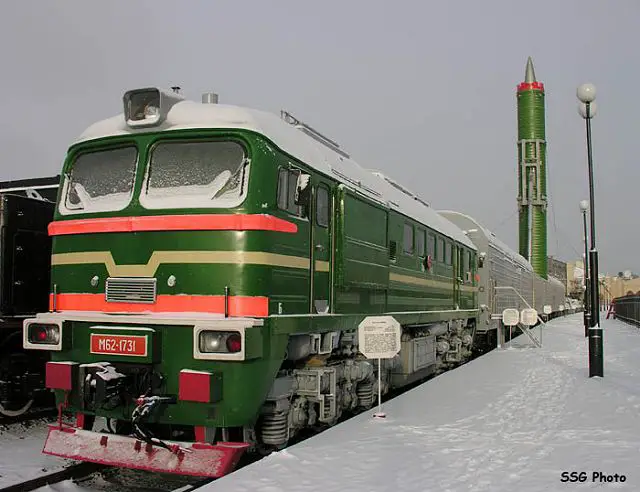Breaking news
Russia to deploy new train-mounted railroad-based nuclear ballistic missile in coming year 1812134.
| a | |||
Defence & Security News - Russia |
|||
| Wednesday, December 18, 2013 11:26 AM | |||
| Russia to deploy new train-mounted railroad-based nuclear ballistic missile in the coming year. | |||
| Russia
will draft a plan in the coming year to deploy train-mounted nuclear missiles
as a potential response to the United States’ Prompt Global Strike
program, the commander of its Strategic Missile Force said on Wednesday,
December 18, 2013. The work will be carried out by the Moscow Institute
of Thermal Technology – the developer of the submarine-launched
Bulava nuclear missile – in the first half of next year. |
|||
 Russia has developed the first railroad-based missile system to replace weapons destroyed in the mid-2000s under the old START treaty and are now allowed by the “New START”. |
|||
“A Defense Ministry
report has been submitted to the president and the order has been given
to develop a preliminary design of a rail-mounted missile system,”
Lt. Gen. Sergei Karakaev said. |
|||
 Russian RT-23 (NATO code SS-24 Scalpel) nuclear missile in a railroad museum on Varshavsky Train Station. Saint Petersburg. |
|||
Russia
has started design works to create a new railroad-based missile system
to replace weapons destroyed in the mid-2000s under the old START treaty
and are now allowed by the “New START”. The RT-23 (NATO reporting name SS-24 Scalpel) was a Soviet ICBM developed and produced by the Yuzhnoye Design Bureau before 1991. It is cold launched, and comes in silo and railway car based variants. The rail-based missiles could move around the rail network and thus be difficult to detect and track. Russia decommissioned its railway car based missiles in 2005 and destroyed all the systems by 2007 as part of the START II treaty on nuclear arms reduction with the US. The ‘New START’ treaty (which is also called START III in Russia) that came into force in 2011 does not limit the use of railway car based systems and allows Russia to restart production. |
|||



















